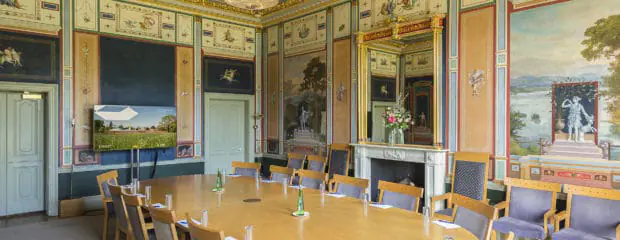May 29 2025
The challenges and rewards of maintaining a historic building: Hinxton Hall
Hinxton Hall is a grade 2* listed building which is set within a rural 125 acre estate. This beautiful building is home to the meeting spaces, dining room, bar, lounges and offices that form part of the Hinxton Hall Conference Centre. The Hall was constructed by John Bromwell Jones between 1748 and 1756, and when the Wellcome Trust purchased the Hall in 1992, they undertook a huge renovation project.
One massive undertaking within that was the restoration of the Pompeiian Room, which took art restorer Pauline Plummer and her team of highly skilled craftspeople around 14 months in 1996/97, at a cost of over £150,000 (equivalent of £350,000 today). The former drawing room is covered from floor to ceiling in striking and strongly coloured nineteenth-century figurative panels inspired by wall paintings excavated from the mid-eighteenth century onwards in Pompeii and Herculaneum. When the ruins of the city of Pompeii were dug from the ashes in 1738, the art world drew breath at the exquisite murals and frescos that adorned the walls of the city's villas. This classical style became a favoured form of decoration by 1800, and is the style that Pauline and her colleagues re-created in the Pompeiian room. The room was first recorded when the Hall passed into the hands of Tube Investments in 1953. The company had covered the walls with a purple flock wallpaper leaving two small aluminium 'windows' for interested visitors to catch a glimpse of the murals beneath. However, neither the Trust nor Pauline had guessed the full extent of what remained.
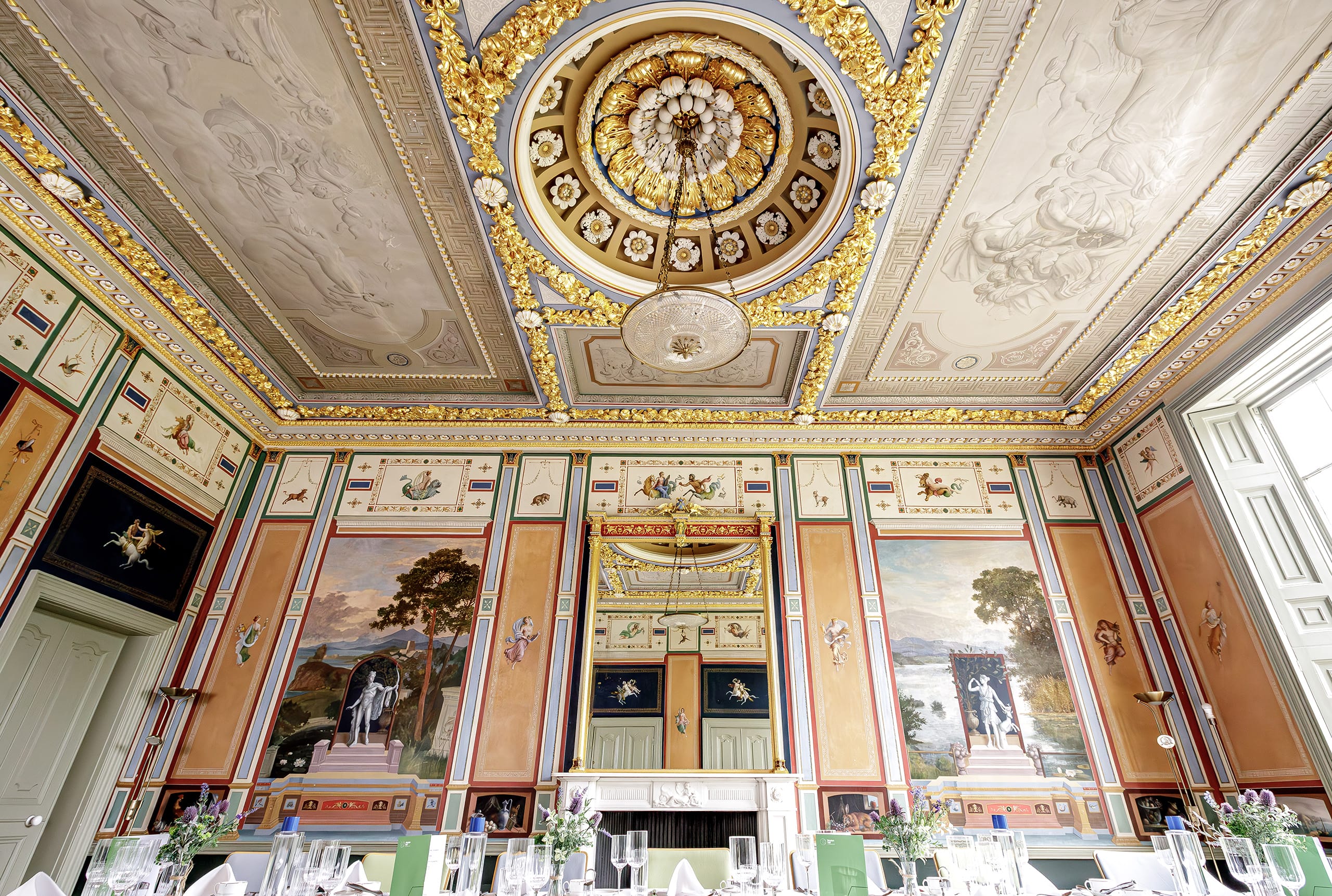
Our in-house facilities team and maintenance contractor, Wates, work tirelessly to ensure the buildings are maintained to the highest standards, balancing the requirements of modern Conference facilities while preserving the amazing historical features we are all able to enjoy.
When maintaining a historic building, there are strict planning requirements to be met and many visits needed from the listed building officers who ensure that works comply with conservation legislation. These regulations are in place to protect the authenticity and historical value of the property but can, and regularly do, restrict the use of certain materials, construction methods, or modifications. Acquiring necessary permits and ensuring compliance with guidelines can be a time-consuming and costly process, requiring close collaboration with heritage authorities and conservation experts.
Over time, foundational elements of the Hinxton Hall buildings have weakened, leading to structural issues such as crumbling masonry, deteriorating roof and issue with sash windows. Recent examples include needing to repoint the front of the Hall a few years ago to ensure the integrity of the building, and we are currently erecting complicated scaffolding around the stable spire to establish the cause of a leak.
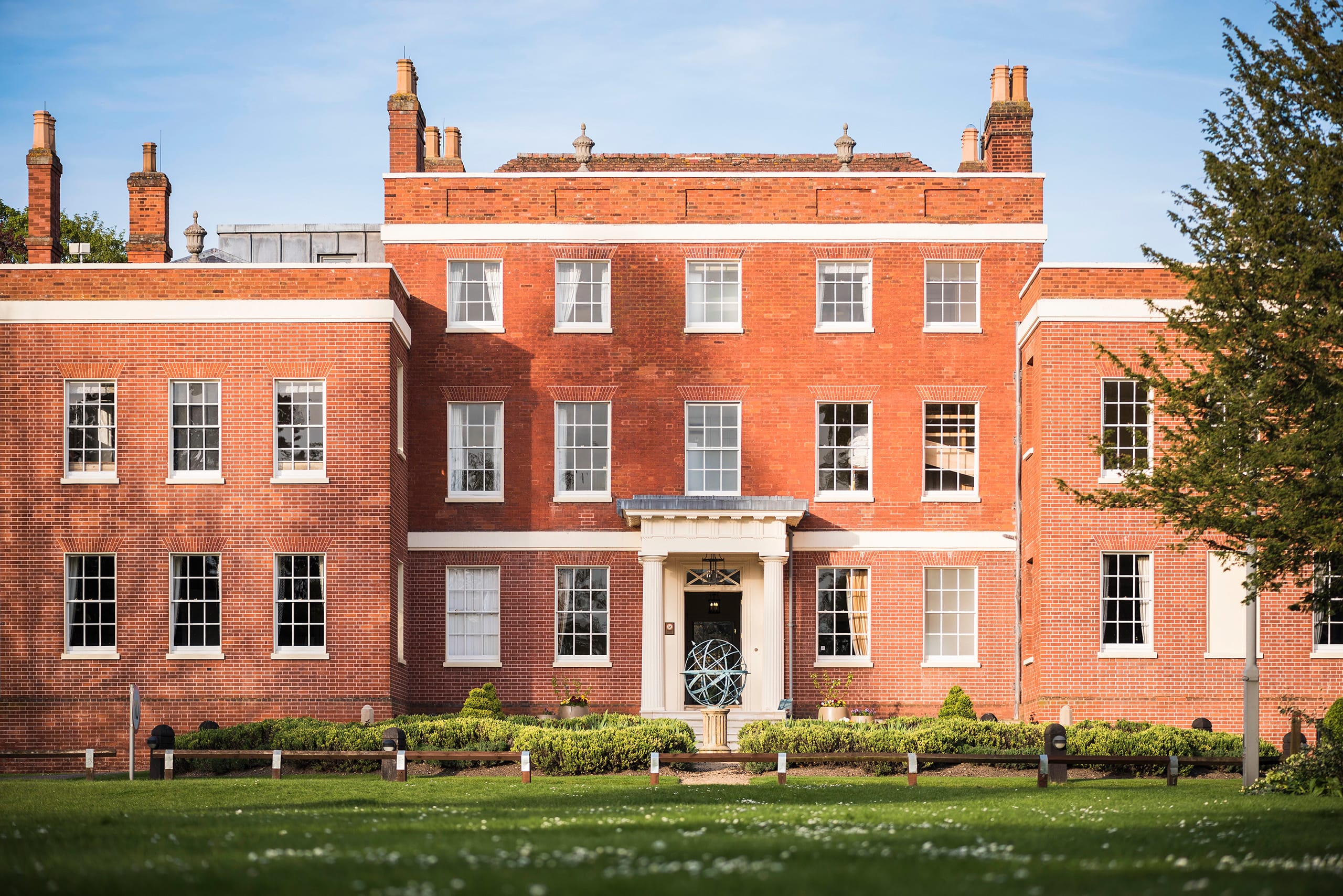
Remedial work requires meticulous planning to ensure it has the minimum impact possible on with the activities being held in the Conference Centre, and rectifying the problems requires consideration of all the following issues: safety, historic building preservation, accessibility, the environment, and sustainable building, which can prove challenging at times! For example, careful planning was required to ensure the look of the building wasn’t compromised when we needed to install new air handling units to improve ventilation to our kitchen spaces. Ever-changing building and fire regulations are also difficult to meet in these buildings, and have resulted us withdrawing all the bedrooms within Hinxton Hall from use.
The cost of maintaining a historic building can be significant. Materials required for restoration are often specialised and expensive. Skilled craftspeople familiar with traditional techniques charge premium rates due to the niche nature of their expertise. We have multiple rooms that require specialists to undertake repairs, such as the highly decorative Green and the Pompeiian rooms. The Green Room’s ceiling was restored in 2022, a process which took 12 weeks to complete and cost approximately £80,000. The Bar and Library have also been redecorated in recent years – the bar in a beautiful heritage blue paint and the Library with striped wallpaper – work which required listed-building consent to ensure the historical elements of the rooms are not lost.
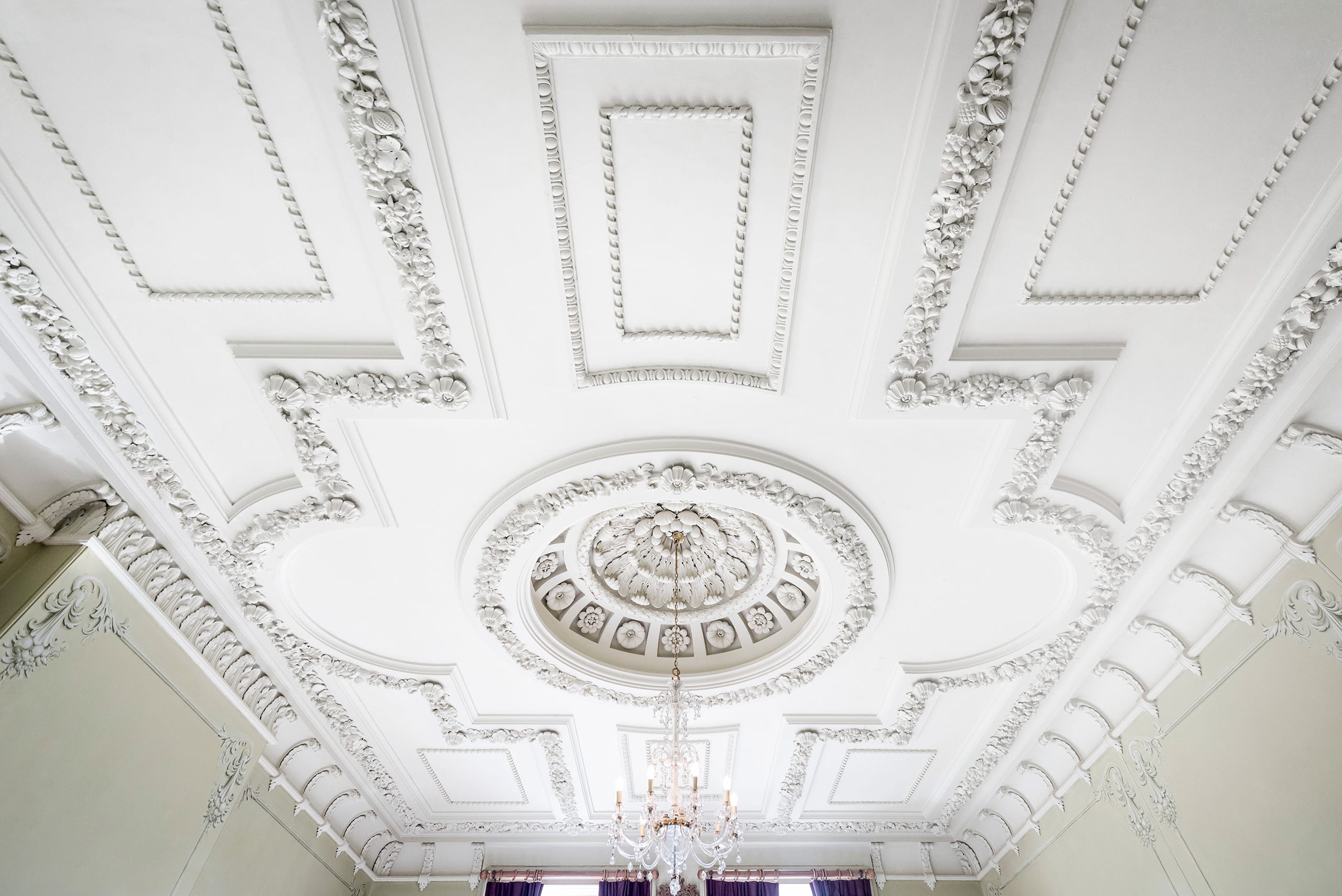
Although maintaining Hinxton Hall comes with considerable challenges, it also offers profound rewards. It provides a tangible connection to the past, inspiring future generations and enriching cultural heritage, so much so we now have a carefully crafted exhibition in the Hall detailing its history, which also required listed building consent.
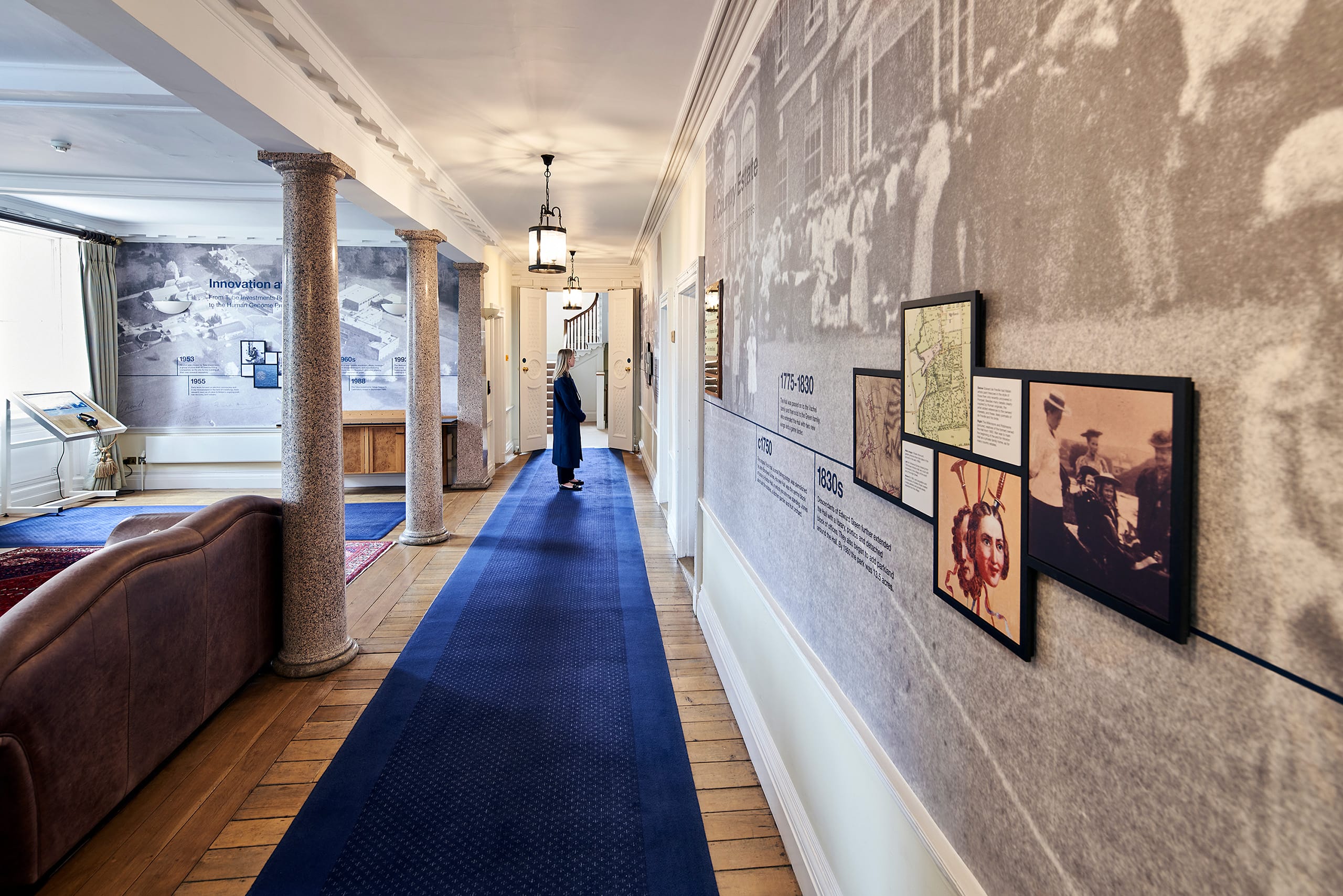
As you walk through the hall you can feel the history of the place, being custodians of its legacy is a privilege.
With careful planning, adequate funding, and the right people it is possible to overcome the challenges that historical buildings like Hinxton Hall bring. To find out more about the hall and its uses over time you can visit genome.gallery or hinxtonhall.org.
Photo gallery
The figure of a large trout carved in stone in bass relief over the front door.
The etched windows of the Library.
Hall roof lantern
Detail of wall painting in Green Room (left) and window etching of classical bust (right)
